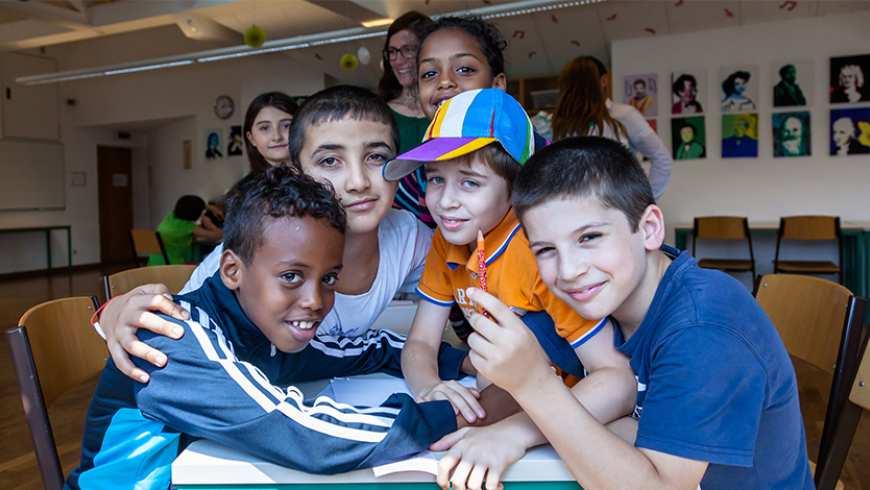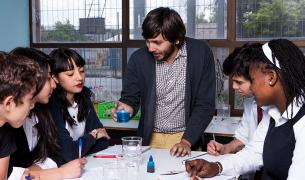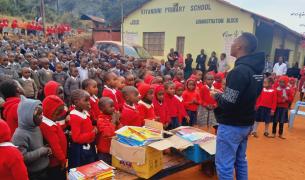Breaking down the language barrier for young refugees

As countries around the world grapple with the challenges of the influx of refugees, many individuals and organizations are working to ensure that the basic human rights of refugees are met, including children’s right to education.
In Austria, several Teach For Austria Fellows are teaching refugee children in the schools where they are placed. Faiza Sadek-Stolz, a member of Teach For Austria’s 2015 cohort who teaches a variety of subjects to 10 to 14 year olds in Vienna, shares the following story of a group of Fellows’ efforts to integrate these students when there is a language barrier:
I have the privilege of teaching several students who are refugees from Syria. Given my studies at the American University in Cairo, and the eight years I spent in Egypt and Morocco, I have the advantage of being able to speak Arabic to these students. One of the girls in my class told me about how she fled the war in Syria with her mother.
The girl’s father had gone ahead with her brothers and had made it safely to Austria. Soon, she and her mother decided it was time for them to set off on their journey to be reunited with the rest of their family. On their way to Europe, as they arrived in Turkey, her mother’s heart stopped beating unexpectedly—and she passed away. My student had to continue her journey to Europe on her own, taking a boat across the Mediterranean Sea to Greece. The boat was overcrowded with people, and she told me that when it set off, she thought she would die right then and there.
But she arrived in Greece where, for a week, she only had water and bread to eat. Eventually, she made it to Vienna, where she is now living with her father and brothers. My student told me that to cope with her grief she turns up the volume of her music and dances. She does not want her father to see her cry.
The first time I taught this girl, in one of my biology classes, she sat in the last row by herself. As soon as I started the lesson she opened a German-Arabic dictionary and started writing down vocabulary on a piece of paper—she knew that she wouldn’t be able to understand the content of my lesson. Because I was aware of the different levels of German proficiency in my classroom, I had prepared a handout for her. It provided her with basic German vocabulary reflecting the content of our lesson on the human respiratory system. She was eager to learn.
I am not the only one who prepares several different lesson plans for one class. A few of my colleagues at our school put a lot of time and effort into lesson planning so they can truly engage every child. But language is a barrier, and other Teach For Austria Fellows and I noticed that very often, despite our efforts, we would find several of our students sitting in classes with nothing to do.
Many of these students excelled at school in Syria, but because of the language barrier could not follow the course material in Austria. And while no one expects them to understand and participate instantaneously, they become frustrated when they simply sit in their seats bored, wondering what the other children are saying.
In response, the Teach For Austria Alumni Club “mim!” together with the other Fellows and I, created the a “First Aid Kit” folder for learning German, which we call “Einfach mehr Deutsch” (Simply More German). The kit includes 15 chapters, covering everyday language that students need at school. There are plenty of great German text books, but none of them teach the basic “school language” that one learns early on. For example, our kit doesn’t include topics such as “buying groceries,” but instead provides material from which children can learn how to read their school timetables or basic math vocabulary. This enables them to participate in class more actively.
Of course, our kit could never replace the proper German language course offered to students twice a week. But our aim is for it to accelerate their ability to understand their lessons and classroom instructions. It enables them to learn new material, participate in class, improve their language skills and, we hope, helps them integrate into our school community and our society as a whole.



